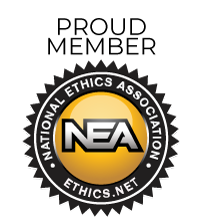Are You Facing a Retirement Tax Bomb?
Do you use a 401(k) or IRA to save for retirement? You’re not alone. These types of accounts are popular for many reasons, but one of the biggest is their tax treatment. As you may know, these accounts are tax-deferred. That means you don’t pay taxes on growth as long as the funds stay inside the account.
Qualified accounts may also offer upfront tax benefits for your contributions. Contributions to your 401(k) come out on a pre-tax basis. That reduces your taxable income, which in turn reduces your taxes. Contributions to an IRA.may also be tax-deductible, depending on your income level.
Qualified accounts aren’t completely tax-free, however. While you may get a deduction upfront and taxes may be deferred over time, eventually, you do have to pay taxes on these assets. That time is usually when you take withdrawals in retirement.
Most distributions from qualified accounts are taxed as income. That could be problematic if you plan on using your 401(k) or IRA to generate most of your retirement income. You could create high levels of taxable income that may create a significant tax liability, which could reduce your net income and your ability to live a comfortable lifestyle.
Fortunately, you can minimize your tax burden by planning ahead. Every situation is unique, so there’s no universal strategy that is right for everyone. However, the following three-step process can help you project your tax liability in retirement and take steps to control it.
List all your sources of retirement income.
- 401(k) or other employer-sponsored plans
- Traditional IRA
- Roth IRA
- Annuities
- Social Security
- Defined Benefit Pension
- Business income
- Real estate income
- And more
Categorize them by tax treatment.
Once you have your list, you can start to categorize your income sources according to how they are taxed. Some income sources will likely be taxable, like:
- Part-time work wages
- 401(k) distributions
- IRA distributions
- Investment income
- Business and real estate income
Other types of income may be tax-free, such as:
- Municipal bond interest
- Life insurance distributions
- Roth IRA withdrawals
And finally, there could be some sources of income that simply require more research. They may be taxable, but also may not be. It could depend on your total taxable income or perhaps other factors. These types of income could include:
- Annuity payments
- Social Security
- Defined Benefit Pension
- And more
Meet with a professional and develop a tax strategy.
The final step is to work with a professional to create a detailed projection of your potential income and tax liability in retirement. They can estimate your income and your possible taxes each year. They can then work with you to develop a strategy that minimizes tax payments.
For example, they might recommend the use of tax-free income from municipal bonds or a Roth IRA. They could suggest the use of life insurance to create tax-free income. They may recommend that you delay Social Security or choose a different pension benefit to reduce your taxable income. A financial professional can help you find the strategy that is best for your needs.
Ready to develop your retirement tax strategy? Let’s talk about it. Contact us at Retirement Advisers.Net. We can help you analyze your needs and develop a strategy. Let’s connect soon and start the conversation.
Licensed Insurance Professional. This information is designed to provide a general overview with regard to the subject matter covered and is not state specific. The authors, publisher and host are not providing legal, accounting or specific advice for your situation. By providing your information, you give consent to be contacted about the possible sale of an insurance or annuity product. This information has been provided by a Licensed Insurance Professional and does not necessarily represent the views of the presenting insurance professional. The statements and opinions expressed are those of the author and are subject to change at any time. All information is believed to be from reliable sources; however, presenting insurance professional makes no representation as to its completeness or accuracy. This material has been prepared for informational and educational purposes only. It is not intended to provide, and should not be relied upon for, accounting, legal, tax or investment advice. This information has been provided by a Licensed Insurance Professional and is not sponsored or endorsed by the Social Security Administration or any government agency.
19662 - 2020/1/16




